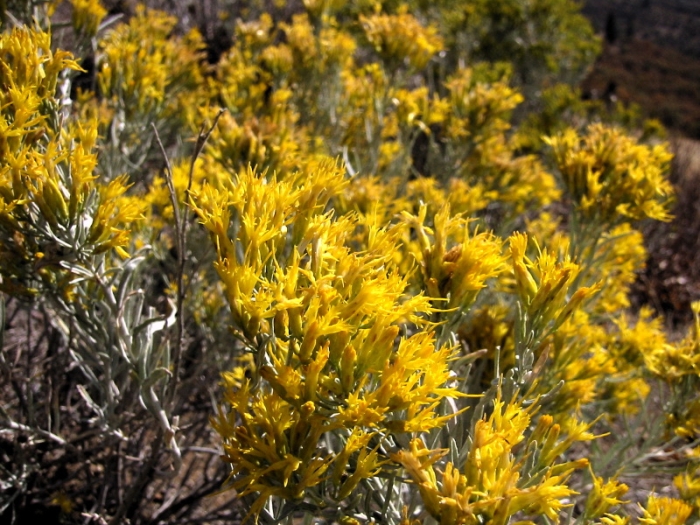Rubber Rabbitbrush
(Ericameria nauseosa)
Rubber Rabbitbrush (Ericameria nauseosa)
/
/

Wsiegmund assumed
CC BY 2.5











































































Estimated Native Range
Summary
Rubber Rabbitbrush is valued for its drought tolerance and is used in xeriscaping for its ornamental golden-yellow flowers and gray-green foliage. It is also appreciated for its ability to thrive in a wide range of coarse, alkaline soils typical of desert environments. Pruning in early spring can enhance its ornamental appeal. In cultivation, it prefers full sun to part shade and requires minimal water once established, making it suitable for low-maintenance landscapes. It is adaptable to soils with slow, medium, or fast drainage. While generally disease-free, it can occasionally suffer from root rot in poorly drained soils. It is not known to be invasive but can spread through root sprouts if conditions are favorable.CC BY-SA 4.0
Plant Description
- Plant Type: Shrub
- Height: 2-7 feet
- Width: 4-7 feet
- Growth Rate: Moderate
- Flower Color: Yellow
- Flowering Season: Summer, Fall
- Leaf Retention: Deciduous
Growth Requirements
- Sun: Full Sun
- Water: Low
- Drainage: Fast, Medium
Common Uses
Bank Stabilization, Bee Garden, Bird Garden, Border Plant, Butterfly Garden, Drought Tolerant, Erosion Control, Fragrant, Low Maintenance, Rock Garden, Salt Tolerant, Street Planting
Natural Habitat
native to arid deserts, dry plains, and foothills of the western half of North America
Other Names
Common Names: Chamisa, Gray Rabbitbrush, Goldenbush, Rabbitbrush
Scientific Names: , Ericameria nauseosa, Chrysothamnus nauseosus, Chrysothamnus frigidus, Bigelowia dracunculoides, Chrysocoma dracunculoides, Chrysothamnus pulcherrimus, Chrysothamnus nauseosus subsp. occidentalis, Chrysothamnus nauseosus var. macrophyllus, Chrysothamnus pallidus
GBIF Accepted Name: Ericameria nauseosa (Pall. ex Pursh) G.L.Nesom & G.I.Baird